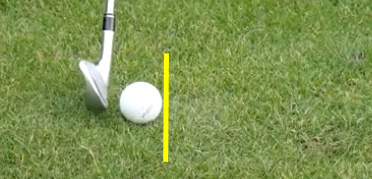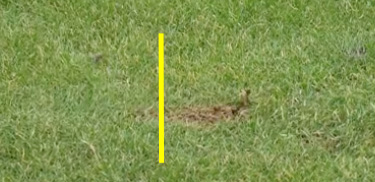Being able to play golf at a top level is all about knowing how to control the club. Last week I gave you a drill designed to teach you how to control the clubface, in order to be in command of trajectory and curvature.
This week the drill is about controlling distance.
One of the things my pro taught me to do, or rather, suggested I learn (teach myself) how to do is to be able to hit a ball a given distance with three different clubs.
For example, hit the ball 125 yards with a 9-iron, 8-iron, and 7-iron. Can you do that?
There are uses on the course for each of these shots, but what this was was another way of being able to control my swing.
So I learned how to do that.
Perch Boomer, a legendary teacher and author of On Learning Golf, the first book ever written about the feel of the golf swing, talked at one point about a drill he accomplished once after considerable effort.
I’m going to quote at length from that part of the book because it makes the point of what becoming a golfer really means. Or as Johnny Miller would say, a player. [Boomer’s emphasis follows.]
“We can play—or we should be able to play—the three-quarter shot with the full swing or a full shot the three-quarter swing. I realize that this conception may be difficult to grasp, but it lies at the root of the superiority of the really great golfer.
“I say a really great golfer because there are many well-known and successful players who can play nothing but full shots; a controlled shot is right outside their golfing range. Yet the great golfer plays every shot controlled, that is he plays every shot with what he feels to be the correct degree of power not at full pressure. This control is the secret of his greatness.
“The test of a golfer’s control is in his ability to play a shot of 70 yards with every iron club in his bag. Think that out; it will give you an idea of what control of power really means. Every shot will be played firmly, but the power applied will obviously have to be varied greatly with the different clubs.
“I do not claim but I was ever a great player but I did teach myself to perform this tour de force, for a tour de force it is. It took me most of my golfing life to learn how to do it. ‘And why,’ you may ask, ‘should you expect us ordinary golfers to be able to do a thing which it took you, an expert, your lifetime to learn?’ Well, I did not say I expected you to be able to do it . . . what I do say is that understanding how it is done and endeavoring to do it yourself will give you a real conception of controlled power in the golf swing.
“In my opinion we cannot lay too much stress upon this matter of getting the right conceptions. It is surprising what you can get people to do once they clearly understand what it is that has to be done. To reverse this, I contend that many of us are playing bad golf not because we are incapable of playing good golf but simply because we are thinking of golf in the wrong way.”
So there you have it. 70 yards with every iron club. Not with part swings, but with full swings of varying power. Boomer played in the long iron days, so you will have to throw in your hybrid irons.
This is the hardest drill in golf. Being able to do it isn’t everything, but making the effort to is.
I’ll end with a story about Ben Hogan, who one day at Shady Oaks was accompanied by an annoying out-of-town golfer who had worked his way into the gangsome.
The guy was a pretty good golfer, and on the 6th hole, they both hit their tee shot about the same distance. Hogan was away and hit into the green, 10 feet left of the pin with a 7-iron. The Guy said, “What club did you hit?” Wrong question.
Hogan asked his caddy for a ball, took a club out of his bag, and hit it just right of the hole. He asked his caddy for another ball, took a different club out of his bag, and hit just left of the hole.
“I hit an 8, a 7, and a 6.”
Point made, and there weren’t any questions for the rest of the day.








